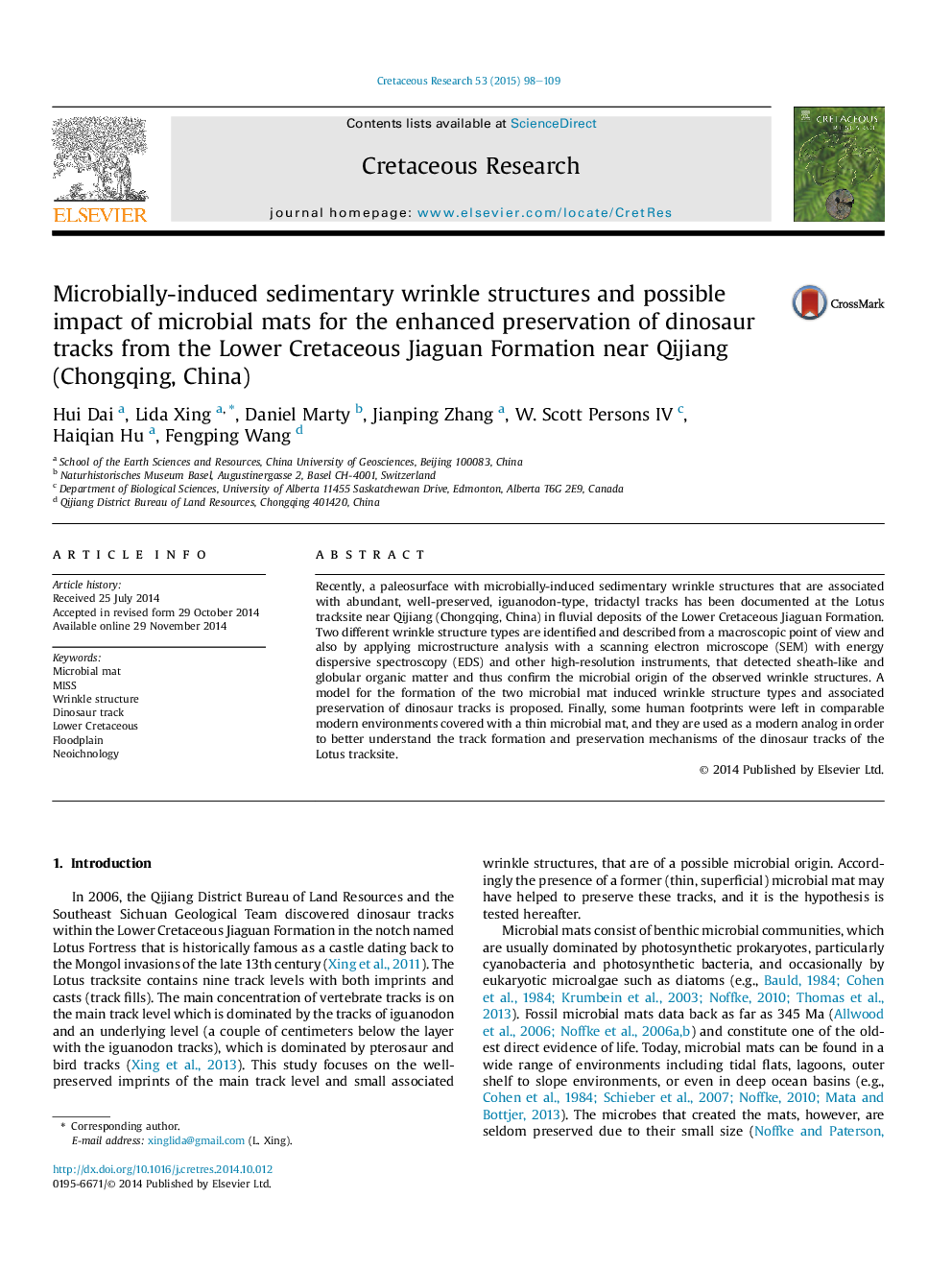| Article ID | Journal | Published Year | Pages | File Type |
|---|---|---|---|---|
| 4746986 | Cretaceous Research | 2015 | 12 Pages |
Recently, a paleosurface with microbially-induced sedimentary wrinkle structures that are associated with abundant, well-preserved, iguanodon-type, tridactyl tracks has been documented at the Lotus tracksite near Qijiang (Chongqing, China) in fluvial deposits of the Lower Cretaceous Jiaguan Formation. Two different wrinkle structure types are identified and described from a macroscopic point of view and also by applying microstructure analysis with a scanning electron microscope (SEM) with energy dispersive spectroscopy (EDS) and other high-resolution instruments, that detected sheath-like and globular organic matter and thus confirm the microbial origin of the observed wrinkle structures. A model for the formation of the two microbial mat induced wrinkle structure types and associated preservation of dinosaur tracks is proposed. Finally, some human footprints were left in comparable modern environments covered with a thin microbial mat, and they are used as a modern analog in order to better understand the track formation and preservation mechanisms of the dinosaur tracks of the Lotus tracksite.
